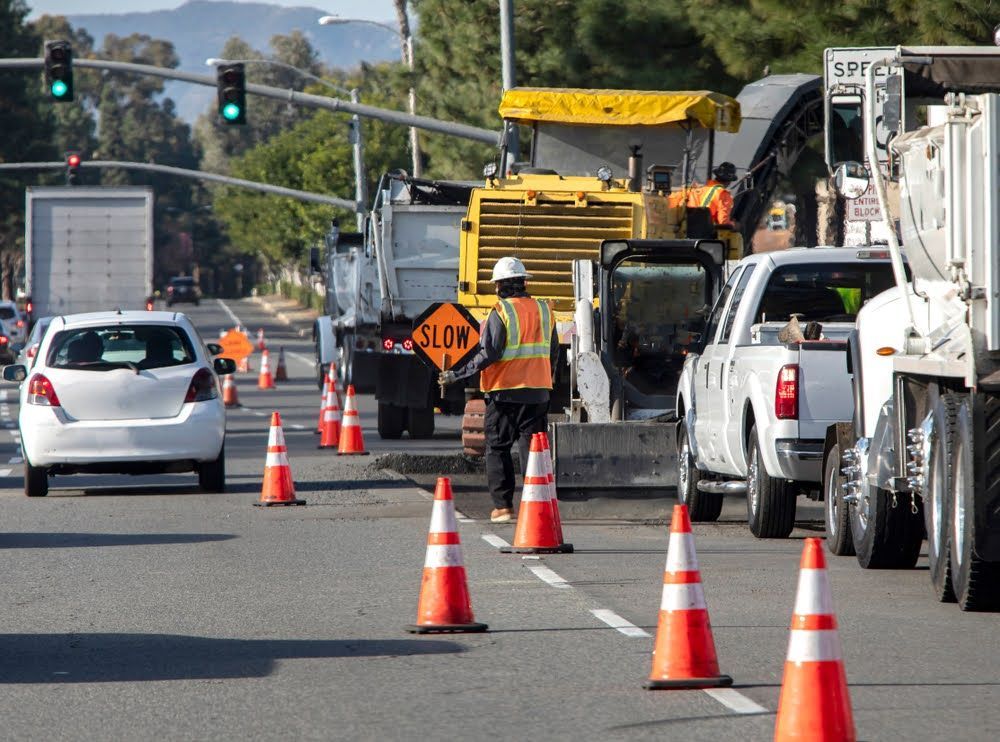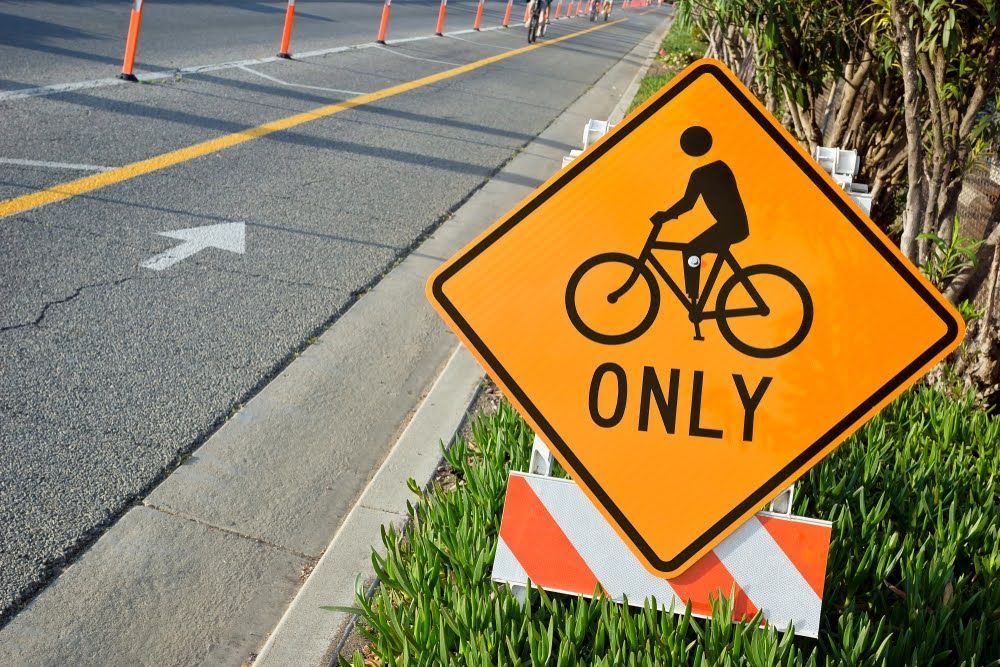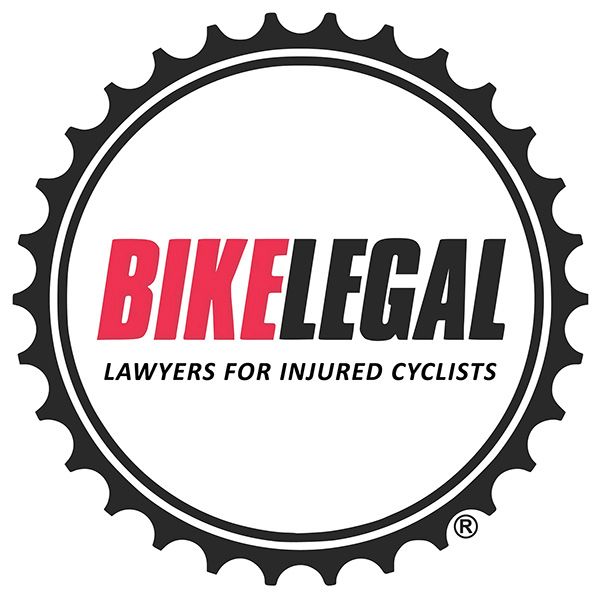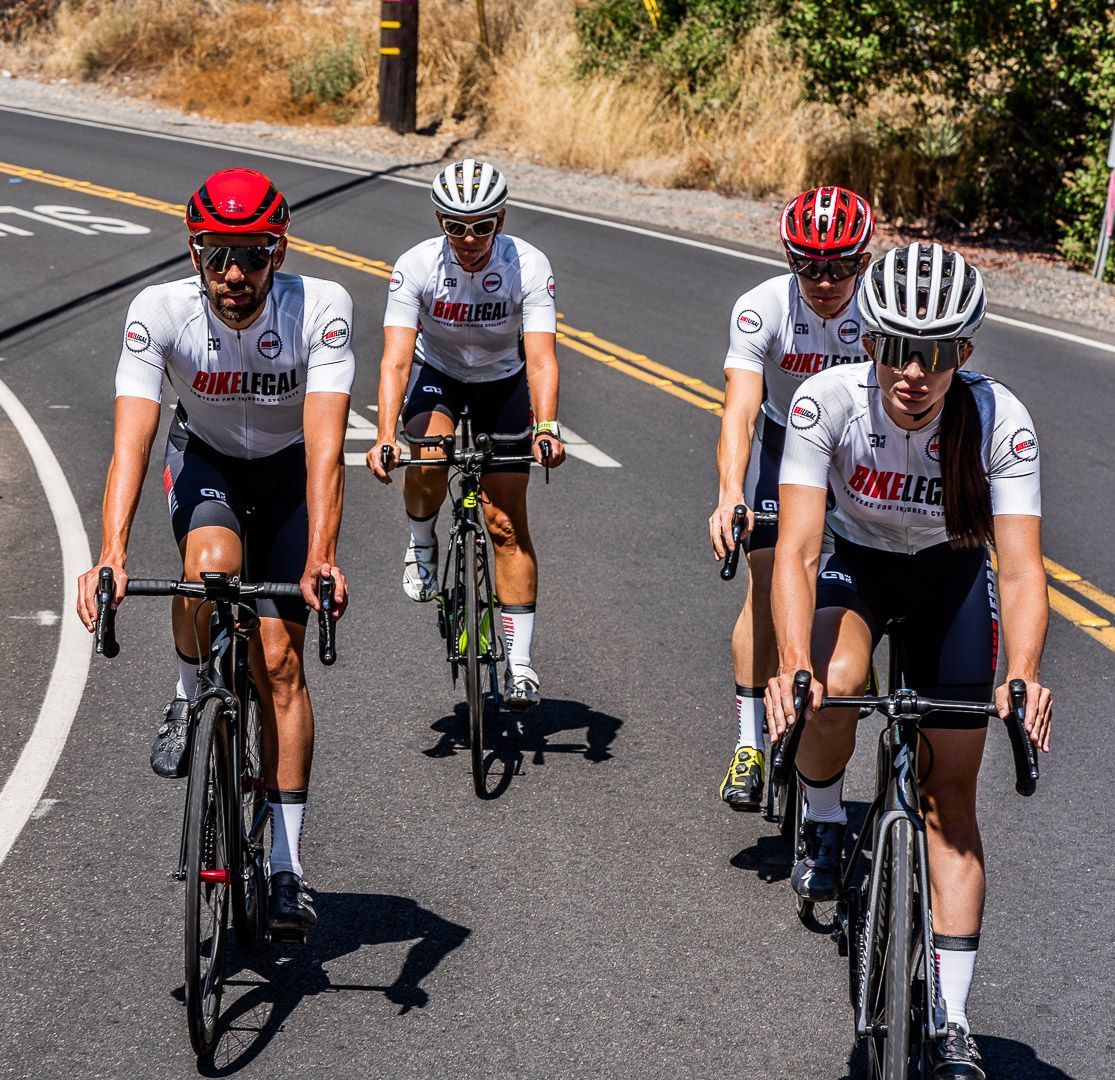Measure HLA: One Year Later, Los Angeles Streets Remain Dangerous for Cyclists and Pedestrians
Follow us on
social media!
On March 5, 2024, Los Angeles voters sent a clear message: it's time to fix the city's dangerous streets.
With 65.50% approval (362,706 in favor, 191,020 against), voters passed Measure HLA, also known as the Healthy Streets LA ordinance. This law requires the city to implement long-overdue safety improvements outlined in the Mobility Plan 2035 whenever it repaves or significantly modifies certain road segments.
However, one year after the law took effect on April 11, 2024, the vision of safer, multimodal streets remains unfulfilled. More than 260 people have died in Los Angeles traffic collisions since the law’s enactment. Cyclists still ride in unprotected bike lanes, or none at all, and pedestrians are forced to navigate crumbling sidewalks and hazardous intersections.
In this article, we examine:
- What Measure HLA is and why it was needed
- What it legally requires the City of Los Angeles to do
- What progress has (and hasn’t) been made
- The legal battle now underway, and what it means for cyclists, pedestrians, and public transit riders throughout Los Angeles
What Is Measure HLA?

Measure HLA (Healthy Streets Los Angeles) is a voter-approved ordinance that legally requires the City of Los Angeles to implement street safety upgrades outlined in the Mobility Plan 2035 whenever it repaves or significantly alters certain streets. Specifically, the law applies to any city-led repaving, resurfacing, or street redesign that affects at least 1/8 mile of roadway included in the plan.
When triggered, the city must install the pre-approved street safety infrastructure for that segment, which can include:
- Protected or unprotected bike lanes
- Bus-only lanes or bus-bike shared lanes
- Pedestrian improvements, such as curb extensions (bulbouts), safer crosswalks, and sidewalk upgrades
Importantly, Measure HLA does not require the creation of new designs; it simply compels the city to follow through on safety upgrades that were already adopted in 2015 under the Mobility Plan 2035 but have largely been ignored.
Key features of the ordinance include:
- A
Mobility Plan public dashboard to track city compliance with the law
- A private right of action that allows any resident to sue the City of Los Angeles if it fails to follow the requirements during qualifying street work
For Los Angeles residents, the HLA street re-paving law aims to transform routine repaving into opportunities to build safer, more equitable streets, rather than just patching potholes.
Why Measure HLA Was Created
Measure HLA was born out of frustration with the City of Los Angeles’ repeated failure to implement its own Mobility Plan 2035—a sweeping vision for safer, more sustainable streets that was unanimously adopted by the City Council in 2015. The plan outlined over 2,500 miles of upgrades aimed at improving conditions for cyclists, pedestrians, and transit users.
The plan’s first objective was Vision Zero, a commitment to eliminate traffic deaths in Los Angeles by 2035.
But nearly a decade after adoption, only a small fraction of the plan has been implemented:
- Just
5% of Mobility Plan projects had been built as of early 2024
- At the city’s current pace, full implementation would take over 160 years.
This disconnect was especially alarming, given that street repaving projects continued without incorporating any safety improvements, thereby missing critical opportunities to address known danger zones.
That inaction led advocacy groups, such as Streets for All and other transportation equity organizations, to draft and promote Measure HLA.
Their goal: legally require the city to follow its own plan whenever it’s already working on a street, maximizing the impact of taxpayer dollars and prioritizing safety.
In short, Measure HLA was created to:
- Hold the city accountable for its commitments
- Prevent more avoidable traffic deaths and injuries
- Ensure every repaving project includes long-overdue safety upgrades
Why Measure HLA Matters for Cyclists and Pedestrians

For anyone who walks, bikes, or takes public transit in Los Angeles, Measure HLA represents more than a policy; it’s a lifeline. Los Angeles streets have long been hostile to vulnerable road users, with deadly consequences.
A City in Crisis: Los Angeles Traffic Safety Stats
- In
2022,
164 pedestrians and 20 bicyclists
were killed in Los Angeles traffic collisions.
- 56% of all fatal or serious crashes occurred on streets targeted for improvements in the
Mobility Plan 2035, even though those streets represent only
25% of the city’s road network.
- According to the
L.A. County Public Health Department,
traffic collisions are the leading cause of death for residents under age 30.
Despite these numbers, the city has done little to change the underlying infrastructure:
- Most streets still lack protected bike lanes, curb ramps, or safe crosswalks.
- Los Angeles streets are littered with potholes and other unsafe road conditions that lead to crashes.
- Transit riders, often from working-class neighborhoods, wait in unsafe, unsheltered conditions.
- Drivers routinely speed on roads designed for high car volume, rather than prioritizing bicycle and pedestrian safety.
- Los Angeles continues to lead the nation in bicycle accidents.
LAPD’s Limited Crash Response Policy
To make matters worse, LAPD no longer responds to most bicycle crashes unless they involve a DUI, visible serious injuries, or ambulance transport. Even in qualifying cases, officers have sometimes failed to show up or file reports. Victims are now often required to file their own collision reports online through Lexis Nexis.
This policy change stems from LAPD budget cuts and shifting priorities following calls to reduce police presence in non-emergency situations, which have resulted in reduced officer availability for these situations.
Infrastructure Implementation: Still a Long Road Ahead
As of early 2025, the city had completed:
- 8.41% of protected bike lanes
- 5.29% of unprotected bike lanes added since 2015
- 4.67% of bus lanes
- 1.00% of the Neighborhood Enhanced Network
This lack of progress has real consequences. Cyclists and pedestrians are increasingly victims of hit-and-run crashes and conditions that fail to meet basic safety standards.
Why HLA Is Crucial for Bicyclists and Pedestrian Safety
Measure HLA ensures that when the city is already mobilized for roadwork, it must simultaneously install proven safety upgrades. This approach is faster, cheaper, and more equitable than waiting for standalone safety projects that may never get funded.
Critically, HLA doesn’t “take away” the road from cars; it balances access so that people walking, biking, or using transit aren’t continually placed at risk. Everyone benefits from a safer street, including motorists.
Injured in a Los Angeles Bicycle Accident?
Whether your crash was caused by a negligent driver, poor road design, or missing bike infrastructure, Bike Legal is here to help. Our Los Angeles-based bicycle accident lawyers specialize in cycling cases and know how to hold the right parties accountable.
Knowing what to do after a bicycle crash can make all the difference, from preserving evidence to handling insurance claims..
📞 Call 877-BIKE-LEGAL (877-245-3534) for a free consultation.
Want to know more? Read our article Why You Need a Bicycle Accident Attorney—Not a General Personal Injury Lawyer After a Bike Crash
Key Benefits of Measure HLA
Measure HLA is a cost-effective way to improve street safety by requiring the city to add bike lanes, crosswalks, and other infrastructure during routine repaving. Instead of building standalone projects years later, HLA ensures safety upgrades happen now, when streets are already being worked on.
1. Saves Lives
HLA installs proven designs from the Mobility Plan 2035, including protected bike lanes and safer crosswalks—features shown to reduce serious injuries and fatalities.
2. Cuts Costs and Delays
By incorporating improvements during repaving, the city avoids additional construction, lowers costs, and completes projects more quickly with less disruption.
3. Reduces Emissions and Traffic
Safer streets encourage more people to walk, bike, and take transit, cutting car trips, lowering emissions, and easing congestion.
4. Promotes Accessibility and Equity
Improvements like curb ramps and lighting make streets safer for everyone, especially children, seniors, and people with disabilities, many in underserved communities.
5. Increases Accountability
Residents can track compliance through a public dashboard and sue the city if it fails to follow the law.
Who Supports Measure HLA?
The measure earned support from a diverse coalition that crosses traditional political and geographic boundaries:
Officials
- Six Los Angeles City Council Members endorsed the measure, including Eunisses Hernandez, Nithya Raman, Katy Yaroslavsky, Marqueece Harris-Dawson, Heather Hutt, and Hugo Soto-Martínez.
Community Organizations
- Over 40 Neighborhood Councils voted to support the measure
- More than 50 organizations representing transportation, environmental, labor, business, and public health interests, including:
- Streets for All
- Move LA
- Climate Resolve
- Los Angeles County Bicycle Coalition
- NRDC (Natural Resources Defense Council)
- Sierra Club – Angeles Chapter
- Coalition for Clean Air
- Los Angeles County Business Federation
These groups recognize that safer, multimodal streets benefit everyone, not just cyclists and pedestrians, but also motorists, first responders, and the city's most vulnerable road users.
Measure HLA is not a radical redesign of L.A.'s streets, it's simply a mechanism to implement a plan the city already approved, backed by broad consensus and supported by data. What makes HLA transformative is that it requires the city to finally follow through on its commitment.
Arguments Against Measure HLA
While Measure HLA passed with strong voter support, it has faced pushback from some city officials, emergency responders, and neighborhood groups. Their concerns fall into three main categories:
1. Emergency Response Times
The United Firefighters of Los Angeles City (UFLAC) expressed concern that reducing vehicle lanes to add bike or bus lanes could delay emergency response.
Counterpoint:
The City’s own Mobility Plan Environmental Impact Report found no negative impact on emergency access. In fact, features like center turn lanes and bus-only lanes can improve response times by helping emergency vehicles bypass congestion.
2. Traffic Congestion
Opponents like Councilmember Traci Park argue that repurposing car lanes could increase traffic delays, cause gridlock, or worsen collision risks.
Counterpoint:
Research shows safe street designs often improve traffic flow by reducing crash-related backups and improving predictability with better lane use and signal timing.
3. Cost
Initial city estimates put the cost of HLA implementation at $3.1 billion over 10 years, raising concerns about funding diversion.
Counterpoint:
Those estimates included items HLA doesn’t require, like full sidewalk reconstruction. More accurate projections suggest costs of around $286 million over a decade, which is just 0.22% of the city’s annual budget. Most funding could come from existing transportation sources such as Measure M, SB1 (gas tax), Prop A and C, and Street Damage Restoration Fees.
One Year Later: What Has (and Hasn't) Happened?
Measure HLA officially became law on April 11, 2024. Supporters hoped it would usher in a new era where Los Angeles street safety improvements were not optional but required. Instead, its first year has been defined by bureaucratic delays, political infighting, and little visible progress.
The Implementation Timeline
Soon after the measure passed, Councilmember Heather Hutt introduced motions to align departments for HLA implementation. But momentum stalled:
- The Public Works Committee didn't hear the item until June 26, three months later.
- Full City Council approval didn't happen until July 30, and only to request departmental reports.
- A draft implementation ordinance wasn't delivered until November 15, over seven months after the vote.
Although HLA didn’t require an ordinance to take effect, advocates supported one to eliminate ambiguity. But the process became mired in disagreements:
- The City Attorney’s Office argued Metro-led projects were exempt.
- The city debated exempting grant-funded projects awarded pre-HLA.
- Confusion persisted over which agency would lead implementation.
- Some council members pushed for dashboard data that emphasized negative impacts, such as lost parking.
A proposed appeals process risked undermining residents' right to sue.
Course Corrections
In February 2025, a joint committee led by Councilmembers Eunisses Hernandez and Heather Hutt amended the ordinance to address key concerns:
- Confirmed LADOT as the lead agency
- Required HLA compliance for unbuilt, grant-funded projects
- Mandated positive public dashboard metrics (e.g., crash reductions)
- Made the appeals process optional, preserving the right to sue
Final approval from the City Council is expected in the coming months.
What's Been Built?
Despite being the law for over a year, Measure HLA has barely been implemented. Only one known segment, about 400 feet of bike lane on Reseda Boulevard, has been confirmed as HLA-compliant. LADOT claims a few others exist, but city agencies have largely paused work on Mobility Plan streets, seemingly to avoid triggering the measure.
Until then, the question remains: how many more lives must be lost before action matches intent?
The Vermont Avenue Lawsuit: A Test Case for Enforcement
In April 2025, longtime mobility advocate and Streetsblog L.A. editor Joe Linton filed the first-ever Measure HLA lawsuit against the City of Los Angeles. His claim? The city violated the law by repaving Vermont Avenue without adding the required bike and pedestrian infrastructure outlined in the Mobility Plan 2035.
What the Lawsuit Alleges
The suit, filed in L.A. County Superior Court, identifies two major violations:
- The 2024 repaving of Vermont Avenue failed to include
protected bike lanes and other safety improvements mandated by HLA.
- The
Metro Board’s Vermont Transit Corridor Project excluded bike lanes, despite their inclusion in the Mobility Plan.
Linton argues that the city is ignoring both the law and the will of voters who passed Measure HLA with nearly 66% approval.
“I’m not seeking money, only safer streets,” said Linton. “The city must be held accountable to its own plans.”
Does Measure HLA Apply to Metro?
This is the core legal dispute. The City Attorney’s Office argues that Metro-led projects are exempt, since Metro is not a city agency. But Linton’s legal team, led by attorney Jonathan Weiss and former Assemblymember Mike Gatto, disagrees.
They argue that because the City funds, permits, and oversees Metro projects, it must also ensure that those projects follow Measure HLA.
“The City can’t outsource responsibility,” said Gatto. “It’s still the guarantor of HLA compliance.”
No Financial Damages—Just Accountability
The lawsuit does not seek personal compensation, only reimbursement of legal fees. Linton is acting as a resident and longtime bike and pedestrian advocate who lives near Vermont Avenue and uses it daily.
To avoid conflicts of interest, Streetsblog has confirmed Linton will not cover HLA-related issues in an editorial capacity during the case.
Why This Lawsuit Matters
This case could shape how Measure HLA is enforced across Los Angeles, particularly when multiple agencies are involved. A favorable ruling could:
- Force revisions of noncompliant projects
- Establish legal precedent for future resident-led lawsuits.
- Put pressure on the City to begin implementing HLA in full.
With more paving scheduled for summer 2025, this lawsuit may determine whether Measure HLA can truly deliver safer, multimodal streets or if it remains stalled by politics and legal loopholes.
The Road Ahead for Measure HLA
Measure HLA represents a rare moment when voters in Los Angeles overwhelmingly demanded change, choosing safety, sustainability, and accessibility over the status quo of deadly streets. But passing a law is only the first step. The slow rollout, legal pushback, and bureaucratic delays over the past year show just how resistant city systems can be to transformation, even when the public has spoken.
Still, the movement for multimodal infrastructure is gaining momentum. Advocates, community members, and now plaintiffs, such as Joseph Linton, are holding the City accountable. The summer of 2025 may finally mark a turning point, if the City implements HLA as intended, prioritizes safe street funding, and embraces the vision laid out in the Mobility Plan 2035.
Have You Been Injured on a Dangerous Street in Los Angeles?
At Bike Legal, we know firsthand how unsafe infrastructure and city inaction can lead to devastating bicycle accidents. As cyclists and bicycle accident attorneys, we stay up to date on laws like Measure HLA to help our clients hold the right parties accountable, whether it's a reckless driver or city negligence.
If you or someone you love was hurt while biking in Los Angeles, you may be entitled to compensation. We have the best bicycle accident lawyers who deliver results! Check our Google Reviews.
📞 Call 877-BIKE-LEGAL (877-245-3534) to schedule your free consultation today.
Let’s fight for safer streets—together.

Frequently Asked Questions
1. What is Measure HLA in Los Angeles?
Measure HLA (Healthy Streets LA) is a 2024 voter-approved law that requires Los Angeles to implement street safety features from its Mobility Plan 2035, such as bike lanes, crosswalks, and bus lanes, whenever it repaves or significantly alters certain streets.
2. What types of safety improvements are required under Measure HLA?
Required improvements can include protected or unprotected bike lanes, dedicated bus lanes, sidewalk enhancements, curb extensions (bulbouts), safer crosswalks, and pedestrian islands—based on the street’s designation in the Mobility Plan.
3. Why hasn’t Measure HLA been widely implemented yet?
The law has faced delays due to City Council inaction, disagreements over jurisdiction (especially on Metro projects), lack of a clear lead agency, and debates over data reporting. As of mid-2025, very few projects have complied with HLA despite repaving activity.
4. Does Measure HLA apply to Metro projects in Los Angeles?
This is a legal gray area. The City Attorney argues that Metro-led projects are exempt, but advocates and recent lawsuits assert that if the city issues permits or contributes funding, HLA must still apply.
5. Can Los Angeles residents sue the city under Measure HLA?
Yes. The ordinance includes a “private right of action,” allowing any resident to file a lawsuit if the city fails to install required safety improvements during qualifying street projects.
6. What streets are affected by Measure HLA?
Only streets listed in the Mobility Plan 2035 are subject to Measure HLA. The measure is triggered when 1/8 mile or more of one of those streets is repaved or altered.
7. Has anyone sued the City of Los Angeles for violating Measure HLA?
Yes. In April 2025, mobility advocate Joe Linton filed the first lawsuit, alleging that the city failed to implement required safety improvements during the repaving of Vermont Avenue.
8. How does Measure HLA affect Los Angeles cyclists and pedestrians?
Measure HLA is designed to make streets safer by requiring infrastructure that protects vulnerable users. For cyclists, this includes bike lanes and safer intersections. For pedestrians, it ensures better crosswalks and sidewalk access.
9. What happens if LAPD doesn't respond to my bicycle crash in Los Angeles?
Under LAPD’s 2021 policy, officers only respond to crashes with visible injuries, DUI, or ambulance transport. Cyclists in “minor” crashes must file their own reports, making legal documentation harder to obtain. Learn more in our article:
LAPD’s New Policy Leaves Crash Victims Without Police Reports.

